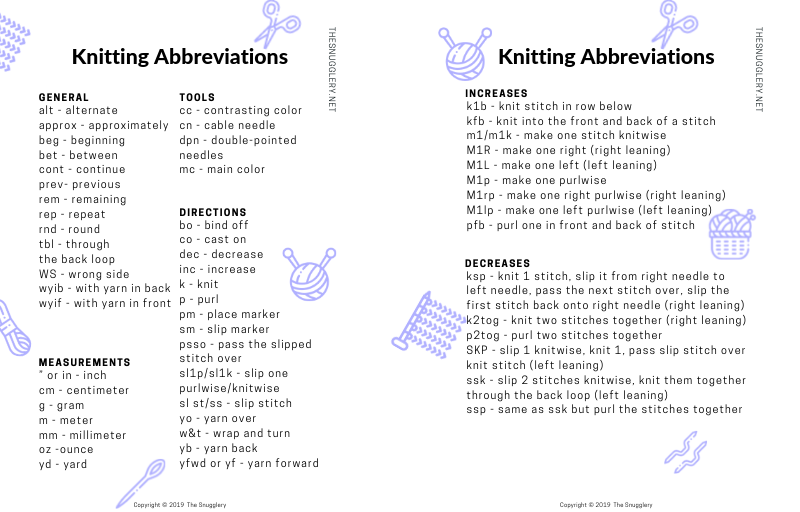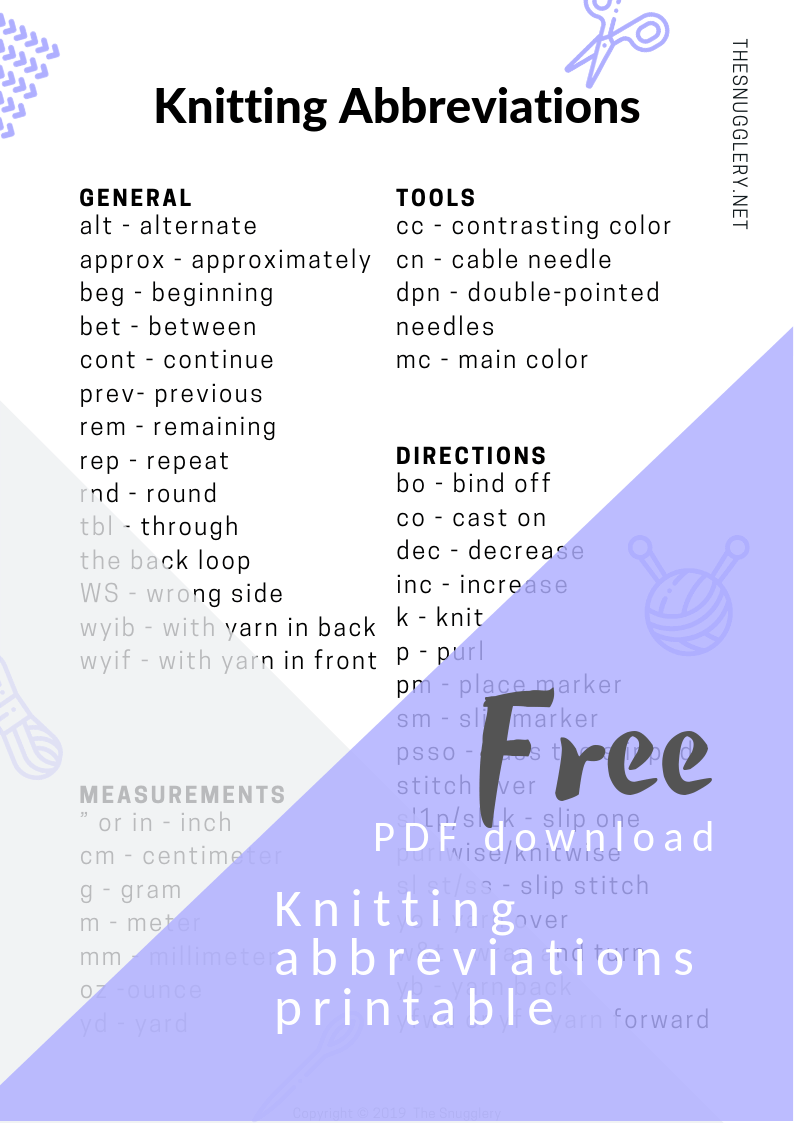Whether you're diving into a new pattern or writing your own, it's helpful to have some of the most common knitting abbreviations handy! Instead of searching each time for "what does ksp stand for?" or "is knit two together right leaning or left leaning?" you are welcome to download this free knitting abbreviations chart that's as pretty as it is useful (if I do say so myself).

Abbreviations contained in the chart include:
General Knitting Terms
alt - alternate
approx - approximately
beg - beginning
bet - between
cont - continue
prev- previous
rem - remaining
rep - repeat
rnd - round
tbl - through
the back loop
WS - wrong side
wyib - with yarn in back
wyif - with yarn in front
Knitting Instruction Abbreviations
bo - bind off
co - cast on
dec - decrease
inc - increase
k - knit
p - purl
pm - place marker
sm - slip marker
psso - pass the slipped stitch over
sl1p/sl1k - slip one purlwise/knitwise
sl st/ss - slip stitch
yo - yarn over
w&t - wrap and turn
yb - yarn back
yfwd or yf - yarn forward
Knitting Tools
cc - contrasting color
cn - cable needle
dpn - double-pointed needles
mc - main color
The Measurements
” or in - inch
cm - centimeter
g - gram
m - meter
mm - millimeter
oz -ounce
yd - yard
Knitting Increases
k1b - knit stitch in row below
kfb - knit into the front and back of a stitch
m1/m1k - make one stitch knitwise
M1R - make one right (right leaning)
M1L - make one left (left leaning)
M1p - make one purlwise
M1rp - make one right purlwise (right leaning)
M1lp - make one left purlwise (left leaning)
pfb - purl one in front and back of stitch
Knitting Decreases
ksp - knit 1 stitch, slip it from right needle to left needle, pass the next stitch over, slip the first stitch back onto right needle (right leaning)
k2tog - knit two stitches together (right leaning)
p2tog - purl two stitches together
SKP - slip 1 knitwise, knit 1, pass slip stitch over knit stitch (left leaning)
ssk - slip 2 stitches knitwise, knit them together through the back loop (left leaning)
ssp - same as ssk but purl the stitches together
If you've found this chart helpful, feel free to share it on Pinterest or Facebook!

